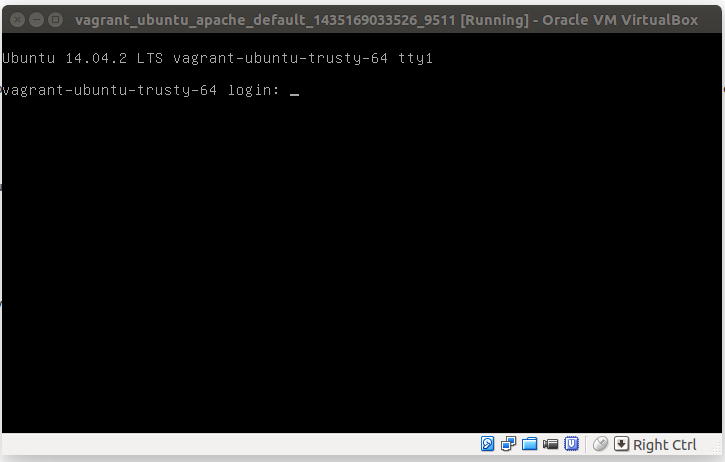

- #HOW TO USE VIRTUALBOX WITH VAGRANT INSTALL#
- #HOW TO USE VIRTUALBOX WITH VAGRANT MANUAL#
- #HOW TO USE VIRTUALBOX WITH VAGRANT SOFTWARE#
On Windows, for example, run the following from a Command Prompt or PowerShell with Administrative privileges: systeminfo | findstr "Hyper Virtualiz Transl Prevent"
#HOW TO USE VIRTUALBOX WITH VAGRANT INSTALL#
Prerequisites BIOS Configuration Settingsīefore you install anything, make certain that your computer BIOS settings are configured for virtualization with Intel VT-x or AMD-V. In addition to all this, you gain the ability store your files in version control and copy between your projects (and other people’s) as well.
#HOW TO USE VIRTUALBOX WITH VAGRANT SOFTWARE#
Even when it is not, however, recovering from changes in context (platform, software revisions, feature changes, etc.) becomes a lot easier when your configuration is defined as code.

Fast: Machines work faster than humans.In contrast, Vagrant allows for that process to be: Opaque: If you wish reproduce your configuration steps or share them with others, you really have no way of doing so, outside of recording your working session and if you’re going to do that, you might as well just use Vagrant.Error-Prone: Because we as humans are inconsistent and prone to distraction when things are slow and tedious, we lose focus, make mistakes, and omit steps.Inconsistent: The way you configure things one time is invariably different from the way you configuration them next time.Tedious: If you need to do a task more than one time, it will quickly become tiresome to perform those same tasks again and again.Slow: Manually typing commands in and clicking through screens is takes time.
#HOW TO USE VIRTUALBOX WITH VAGRANT MANUAL#
But manual configuration is rife with problems and Vagrant helps solve many of them. You could just install VirtualBox and manually configure your VMs. Let’s say you want to create virtual machine for testing your web application. The Problems Vagrant SolvesĮxplaining the problems Vagrant solves and how it works is best done by example.

Let take a brief look at what this extra bit of functionality does for you…. You define in text what you want virtual machines you want to build and what configuration they should have, then just type vagrant up in your terminal, and it does all the deployment and configuration for you. So, the, what is Vagrant? Vagrant is a tool for defining virtual machines as code in order to make the process of creating, maintaining, sharing, and cleaning up after them much faster, easier, more consistent, and less error prone. Vagrant is one of those tools that, once you begin using it, you find yourself saying: “Wait – How long has this existed?” and “Why haven’t I been using it all these years?!” In this post, I’ll discuss what Vagrant is, some details about getting it installed, and then the structure of a basic Vagrant deployment.


 0 kommentar(er)
0 kommentar(er)
